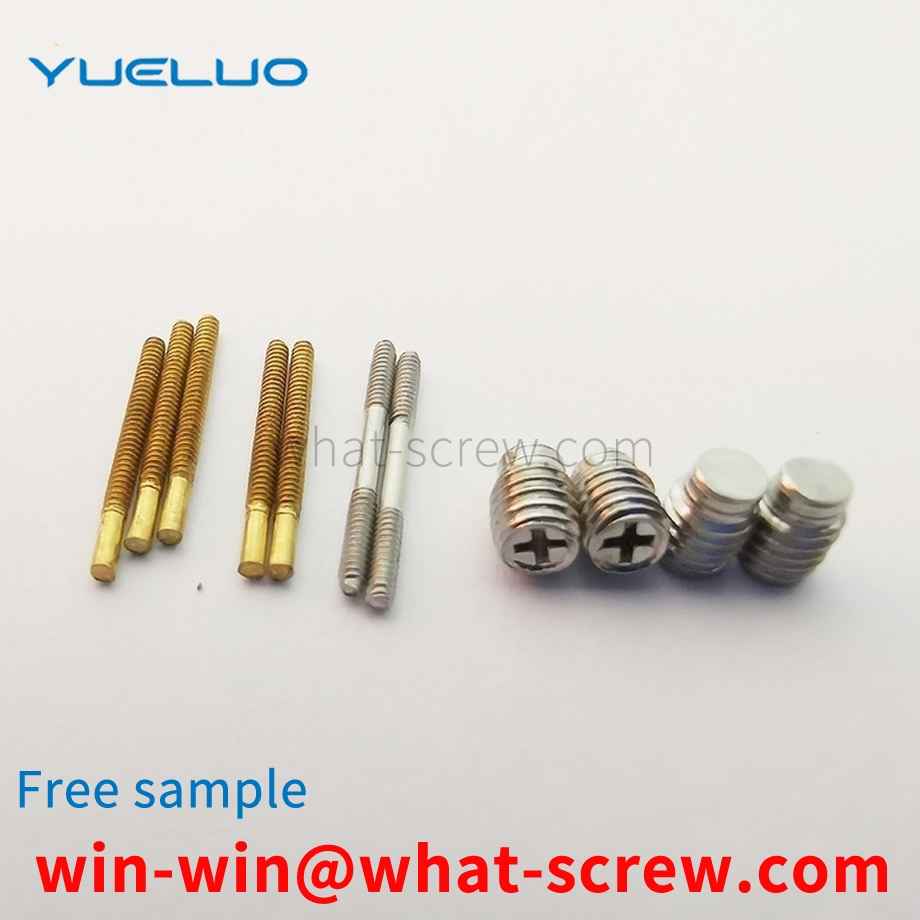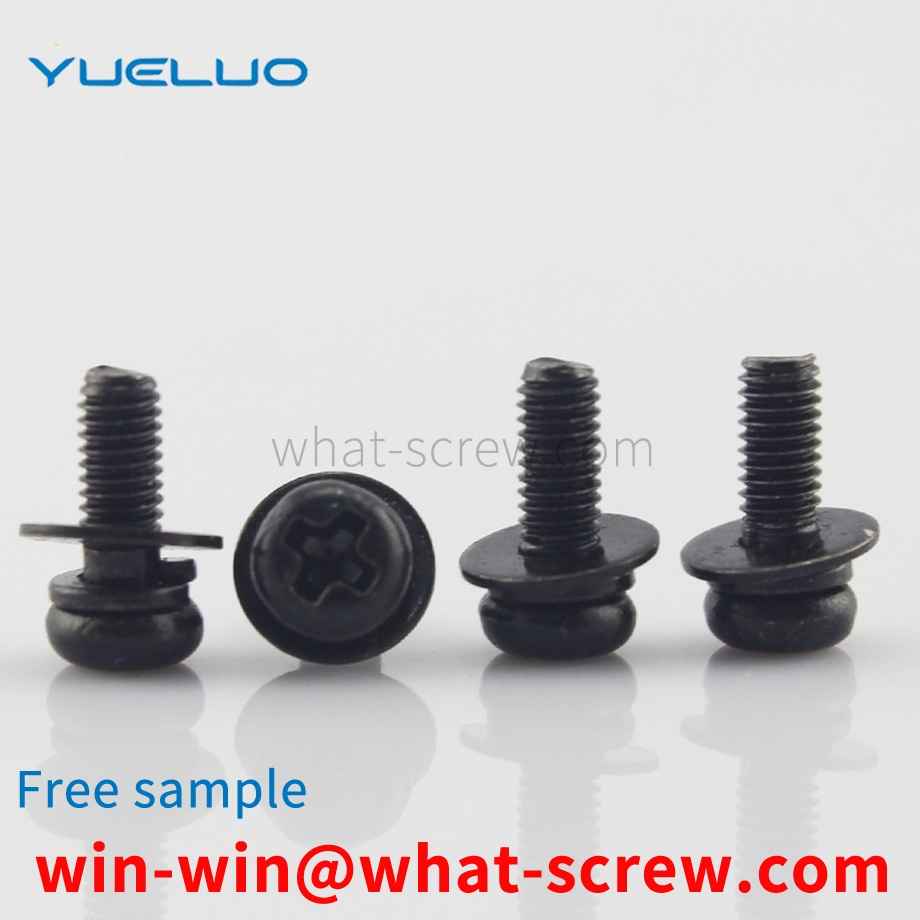Bolts or screws and flat washers assemblies GB/T 9074.1-2002 Cross recessed head screws and external serrated lock washers assemblies GB 9074.2-88 Cross recessed pan head screws and spring washers assemblies GB 9074.3-88 Cross recessed pan head screws, springs Washer and flat washer assembly GB 9074.4-88 Cross recessed small pan head screw and flat washer assembly GB 9074.5-88 Cross recessed small pan head screw and large washer assembly GB 9074.6-88 [1] Cross recessed small pan head screw and spring washer Assembly GB 9074.7-88 Cross recessed pan head screw, spring washer and flat washer assembly GB 9074.8-88 Cross recessed countersunk head screw and conical lock washer assembly GB 9074.9-88 Cross recessed countersunk head screw and conical lock Tight washer assembly GB 9074.10-88 Cross groove hexagon head bolt and flat washer assembly GB 9074.11-88 Cross groove hexagon head bolt and spring washer assembly GB 9074.12-88 Cross groove hexagon head bolt, spring washer and flat Washer assembly GB9074.13-88 Hexagon head bolt and spring washer assembly GB 9074.15-88 Hexagon head bolt and external serrated lock washer assembly GB 9074.16-88 Hexagon head bolt, spring washer and flat washer assembly GB 9074.17-88 From Tapping screw and flat washer assembly GB /T 9074.18-2002 Cross recessed hexagon head self-tapping screw and flat washer assembly GB 9074.20-88 Cross recessed hexagonal head self-tapping screw and large washer assembly GB 9074.21-88 For assembly Spring Washers GB 9074.26-88 External Serrated Lock Washers for Assemblies GB 9074.27-88 Conical Lock Washers for Assemblies GB 9074.28-88.
The first person to describe the spiral was the Greek scientist Archimedes (c. 287 BC - 212 BC). An Archimedes screw is a huge spiral contained in a wooden cylinder that is used to irrigate fields by raising water from one level to another. The real inventor may not be Archimedes himself. Maybe he was just describing something that already existed. It may have been designed by the skilled craftsmen of ancient Egypt for irrigation on both sides of the Nile. In the Middle Ages, carpenters used wooden or metal nails to attach furniture to wooden structures. In the 16th century, nail makers began producing nails with a helical thread, which were used to connect things more securely. That's a small step from these kinds of nails to screws. Around 1550 AD, the metal nuts and bolts that first appeared in Europe as fasteners were all made by hand on a simple wooden lathe. Screwdrivers (screw chisels) appeared in London around 1780. Carpenters have found that tightening a screw with a screwdriver holds things in place better than hitting with a hammer, especially with fine-grained screws. In 1797, Maudsley invented the all-metal precision screw lathe in London. The following year, Wilkinson built a nut and bolt making machine in the United States. Both machines produce universal nuts and bolts. Screws were quite popular as fixings because an inexpensive method of production had been found at that time. In 1836, Henry M. Philips applied for a patent for a screw with a cross recessed head, which marked a major advance in screw base technology. Unlike traditional slotted head screws, Phillips head screws have the edge of the head of the Phillips head screw. This design makes the screwdriver self-centered and not easy to slip out, so it is very popular. Universal nuts and bolts can connect metal parts together, so by the 19th century, the wood used to make machines to build houses could be replaced by metal bolts and nuts. Now the function of the screw is mainly to connect the two workpieces together and play the role of fastening. The screw is used in general equipment, such as mobile phones, computers, automobiles, bicycles, various machine tools and equipment, and almost all machines. need to use screws. Screws are indispensable industrial necessities in daily life: extremely small screws used in cameras, glasses, clocks, electronics, etc.; general screws for televisions, electrical products, musical instruments, furniture, etc.
met a customer before, and the stainless steel screws needed by the company need to be prevented from loosening. Simply put, the stainless steel screw should be used on the product material so that the stainless steel screw will not fall off lightly. The screws are required to be more tightly connected with the product material. For the solution of stainless steel screw anti-loosening, there are two solutions. Next, the following two solutions to prevent loosening of stainless steel standard parts are presented. The first is to use the resilience of special materials, such as engineering resin materials, which have good resilience. Attach it to the stainless steel screw thread. Make it mechanically rub against the nut, or material product. Generate vibration and absolute resistance. Completely solve the problem of loose screws. The second, simply put, is to apply a layer of glue on the thread of the stainless steel screw, the so-called dispensing. This glue is called drop-resistant glue. This glue has good properties such as high stickiness and non-toxicity. This glue is applied to stainless steel screws, and when dry, it adheres extremely well. The stainless steel screw thread can be combined with the nut thread, or after the product threaded hole is joined, resulting in a super tightening effect. Play a super good anti-loosening effect.
The existing way to achieve radial locking of the shaft is generally to sleeve the positioning block on the shaft, and then use a cylindrical pin to pass through the positioning block to lock the shaft. The locking structure and method are as follows: A locking groove with an arc-shaped cross-section is set on the outer side of the shaft along the direction perpendicular to the axis of the shaft, an opening is set on the positioning block, and then a cylindrical pin is used to pass through the positioning block from the outside of the positioning block and screw the lock at one end of the cylindrical pin. When the lock nut is tightened, the opening on the positioning block will be deformed inwardly and locked on the shaft.
The inner hole retaining ring groove processing mechanism is characterized in that: it comprises a pneumatic grinder fixed block installed on the tool table of the lathe, a pneumatic grinder installed on the pneumatic grinder fixed block and a grinding wheel piece installed on the front end of the pneumatic grinder; The pneumatic grinder mounting block is provided with a pneumatic grinder installation through hole, and there are at least 2 screw holes above the pneumatic grinder installation through hole; the grinding wheel is designed according to the diameter of the product and the thickness of the groove width, in order to increase the strength of the grinding wheel , Add flanges at both ends of the grinding wheel to improve the strength of the grinding wheel. The grinding wheel piece includes the connecting blade on the flange plate. The center of the flange plate is provided with a mounting hole installed on the pen-type pneumatic grinder. The diameter of the mounting hole is 17.8- 18mm, the diameter of the grinding wheel is 18-20mm.
We have many years of experience in the production and sales of screws, nuts, flat washers, etc. The main products are: GB849 washers, rivet stud screws, O-rings for sealing kit boxes, A-grade hexagon bolts and other products, we can provide you with suitable products for you. Fastener Solutions.



















 Service Hotline
Service Hotline




